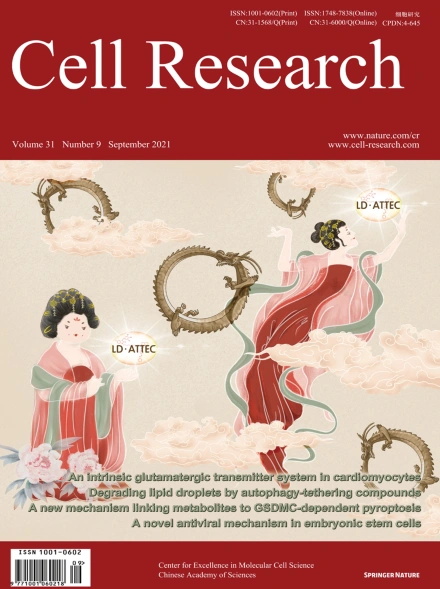
Advanced Search
Submit Manuscript
Advanced Search
Submit Manuscript
Volume 31, No 9, Sep 2021
ISSN: 1001-0602
EISSN: 1748-7838 2018
impact factor 17.848*
(Clarivate Analytics, 2019)
Volume 31 Issue 9, September 2021: 951-964 |
Identification of an endogenous glutamatergic transmitter system controlling excitability and conductivity of atrial cardiomyocytes
Duanyang Xie1,2,3 , Ke Xiong1,2,3 , Xuling Su2,3 , Guanghua Wang2,3 , Qiang Ji4 , Qicheng Zou2,3 , Lingling Wang2,5 , Yi Liu1,2,3 , Dandan Liang1,2,3 , Jinfeng Xue6,7 , Luxin Wang1,2 , Xueting Gao1,2 , Xingdong Gu2,5 , Hongyu Liu1,2 , Xiaoyu He1,2 , Li Li2,3,8 , Jian Yang2,3 , Youming Lu9 , Luying Peng2,3,8 , Yi-Han Chen1,2,3,8,*
1Department of Cardiology, East Hospital, Tongji University School of Medicine, Shanghai 200120, ChinaAs an excitatory transmitter system, the glutamatergic transmitter system controls excitability and conductivity of neurons. Since both cardiomyocytes and neurons are excitable cells, we hypothesized that cardiomyocytes may also be regulated by a similar system. Here, we have demonstrated that atrial cardiomyocytes have an intrinsic glutamatergic transmitter system, which regulates the generation and propagation of action potentials. First, there are abundant vesicles containing glutamate beneath the plasma membrane of rat atrial cardiomyocytes. Second, rat atrial cardiomyocytes express key elements of the glutamatergic transmitter system, such as the glutamate metabolic enzyme, ionotropic glutamate receptors (iGluRs), and glutamate transporters. Third, iGluR agonists evoke iGluR-gated currents and decrease the threshold of electrical excitability in rat atrial cardiomyocytes. Fourth, iGluR antagonists strikingly attenuate the conduction velocity of electrical impulses in rat atrial myocardium both in vitro and in vivo. Knockdown of GRIA3 or GRIN1, two highly expressed iGluR subtypes in atria, drastically decreased the excitatory firing rate and slowed down the electrical conduction velocity in cultured human induced pluripotent stem cell (iPSC)-derived atrial cardiomyocyte monolayers. Finally, iGluR antagonists effectively prevent and terminate atrial fibrillation in a rat isolated heart model. In addition, the key elements of the glutamatergic transmitter system are also present and show electrophysiological functions in human atrial cardiomyocytes. In conclusion, our data reveal an intrinsic glutamatergic transmitter system directly modulating excitability and conductivity of atrial cardiomyocytes through controlling iGluR-gated currents. Manipulation of this system may open potential new avenues for therapeutic intervention of cardiac arrhythmias.
https://doi.org/10.1038/s41422-021-00499-5